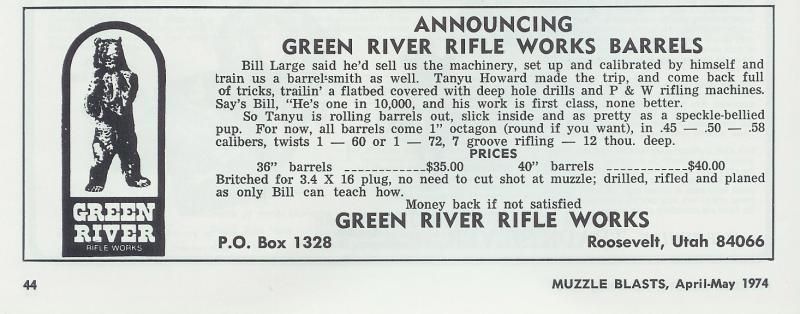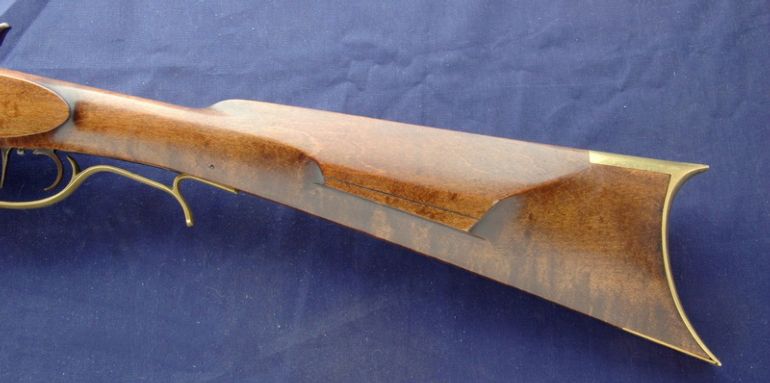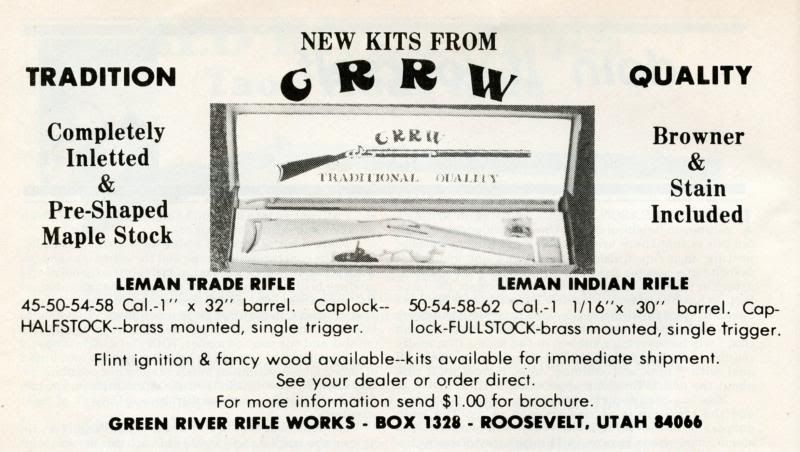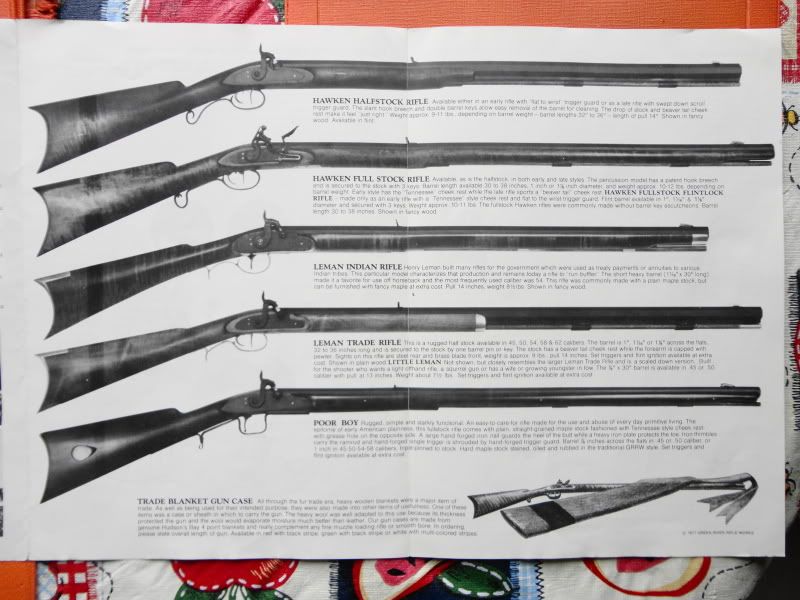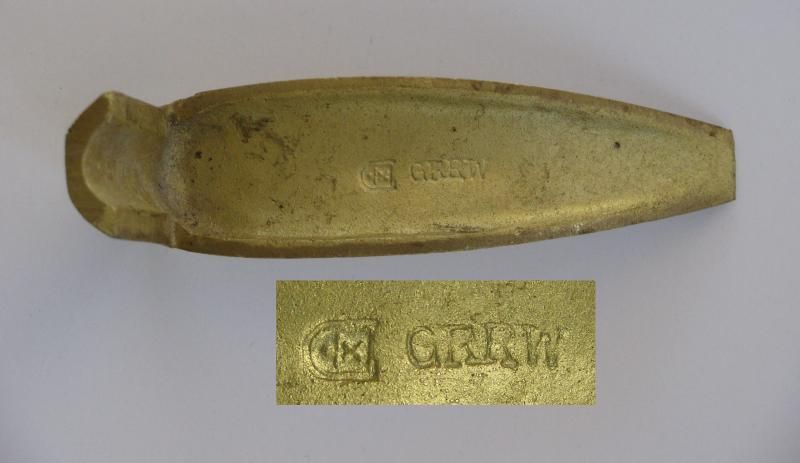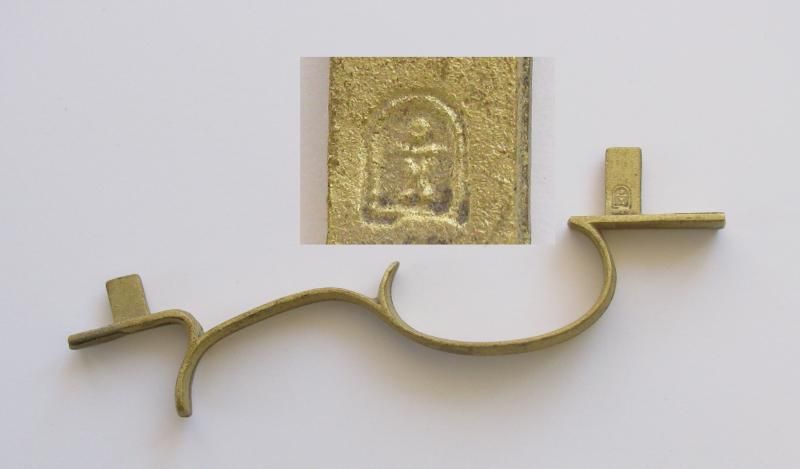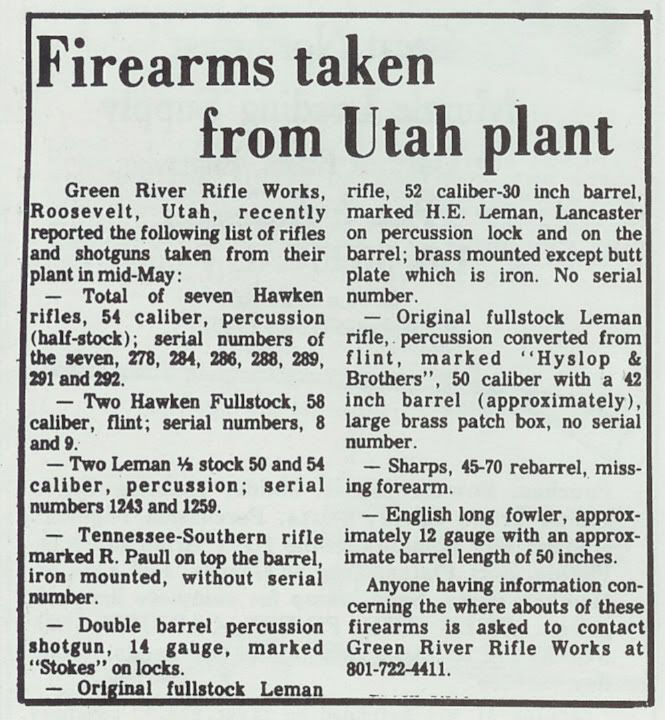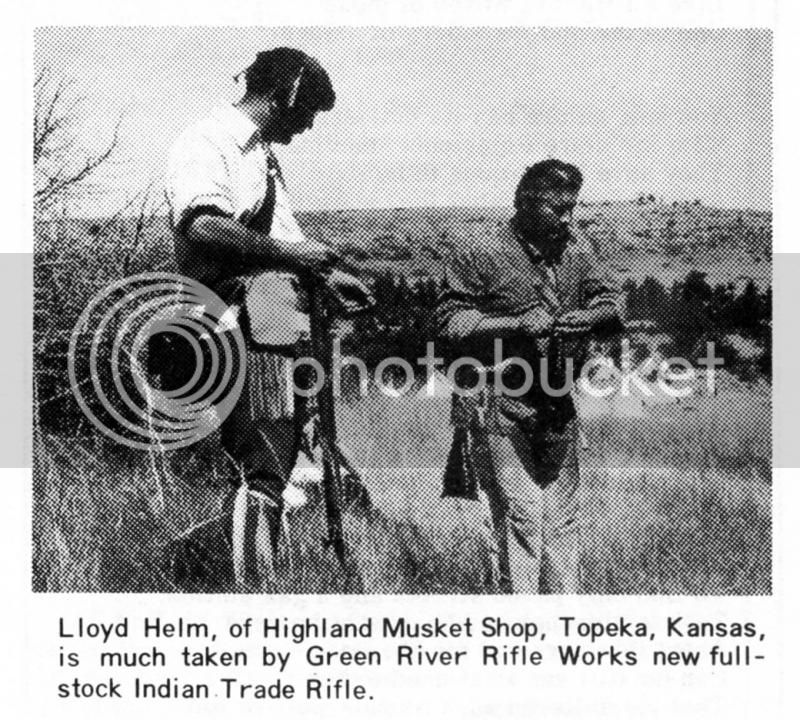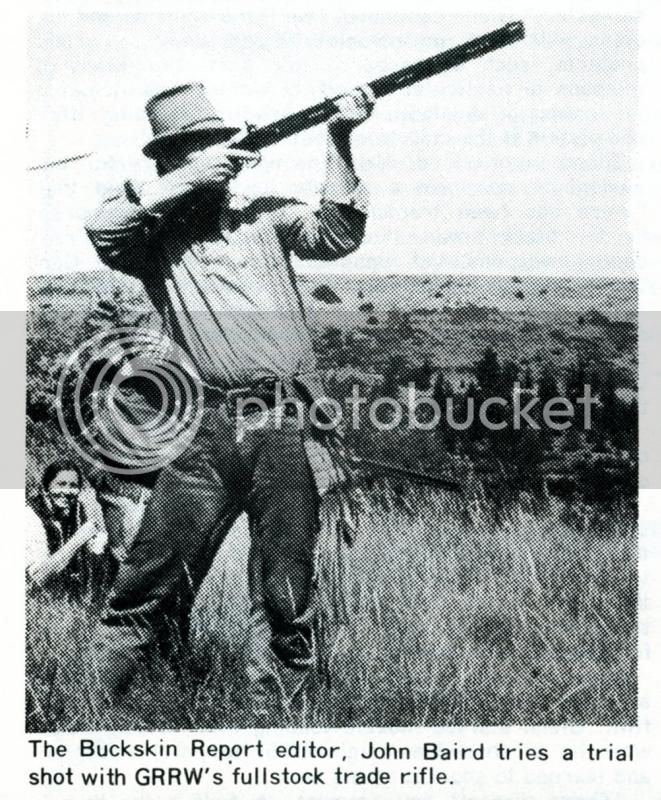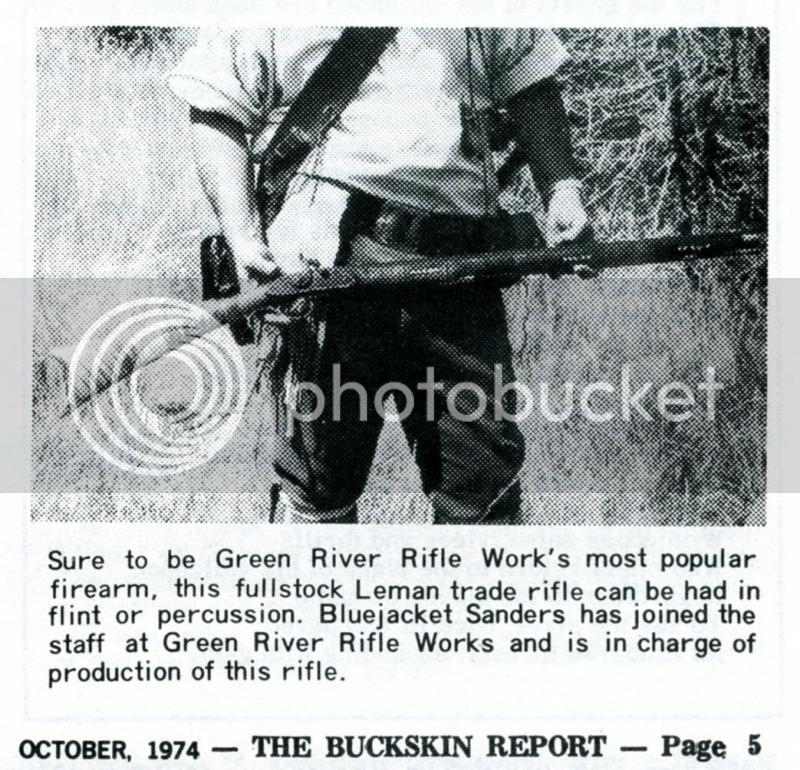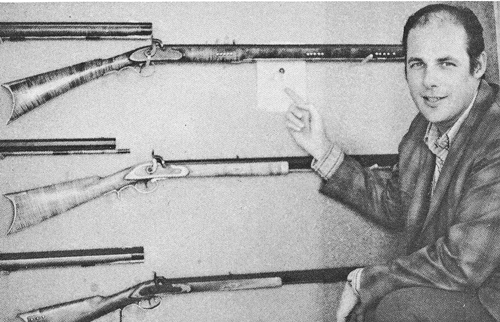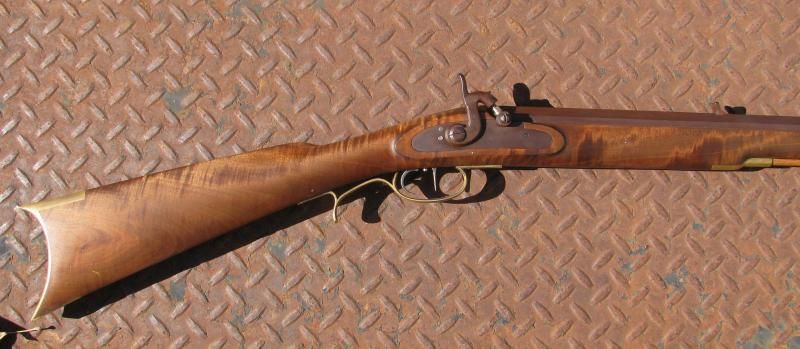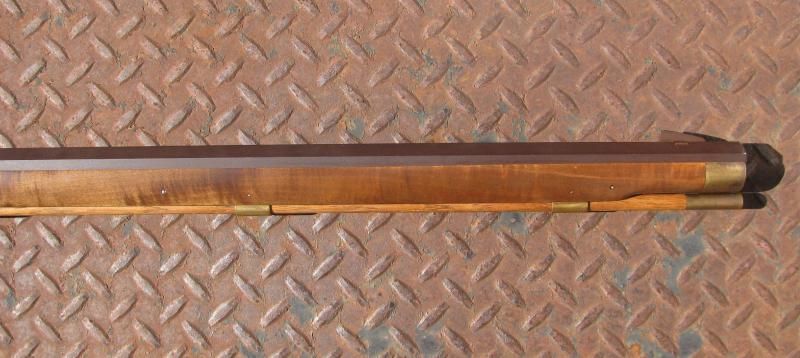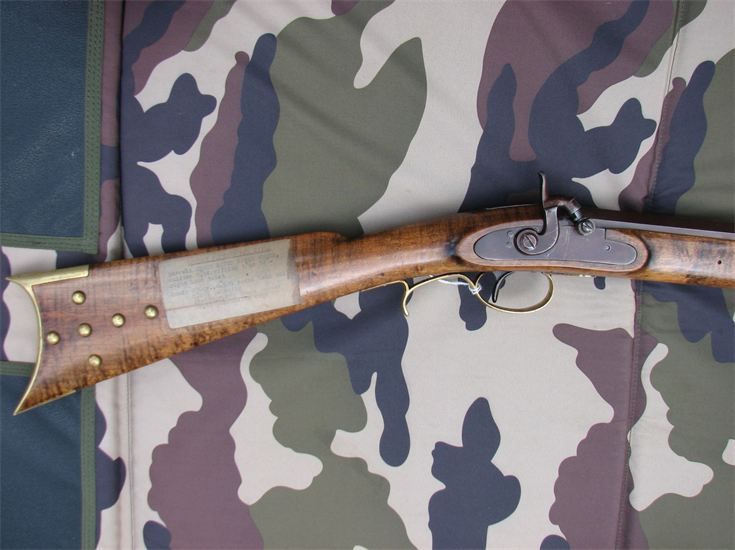Good to see you join us, Herb.
Herb did most of the research and documented the prototype Leman Indian Rifle I will talk about in a few minutes.
Seems the problems between the forum and Photobucket have been fixed or resolved itself. In any event, the photos are loading much quicker now, and I can finish the story on GRRW’s Leman rifles.
Nineteen seventy-four was a pivotal year for GRRW. Their rifles were selling well, and they were increasing staff to try to meet demand and adding new models to their line of rifles. Among the new hands was Phil “Bluejacket” Sanders. Bluejacket was well known in the muzzleloader fraternity at that time and very knowledgeable in period firearms.
One of his early projects at GRRW was improving the looks of the Leman Trade Rifles. Doc White had some antique Leman rifles in his collection, and Bluejacket made copies of the butt plate and trigger guard from them. Bluejacket stamped “GRRW” and his touch mark on the inside of the butt plate master and his touch mark on the front tab of the trigger guard master. They then had casts made, and the stamps carried through on the cast butt plates and trigger guards.
This proprietary furniture was smaller than the commercial furniture they had been using on their Leman rifles, so Bluejacket changed the lines of the butt stock and slimmed down the rifle. The changes can be seen in the pictures of the early and later Leman Trade Rifles at the beginning of this thread.
His next project was to design a full stock Leman rifle. One of the Lemans in Doc’s collection was a short barreled full stock. As an aside, this rifle was stolen in 1976 along with some other antiques and some new rifles. This notice about the theft was published in August 76 issue of
Buckskin Report.
Bluejacket built a prototype Leman Indian Rifle patterned after the antique Leman with the 30” barrel. The prototype rifle was demonstrated at the 1974 NAPR Rendezvous and proved to be a big hit.
This next picture shows Doc pointing to the prototype in the GRRW show room.
Doc did not intend for the prototype to be sold, but a customer walked into the shop one day and wanted it. The cash strapped company needed the money, and unknown to Doc, the rifle was sold.
Bluejacket’s prototype rifle recently resurfaced in Vernal, Utah and is pictured below.
The stolen guns were never recovered, but the short barrel, antique Leman probably looked something like this one.
Here is a sample of a production Leman Indian Rifle. The adjustable rear sight is probably after market.
Below are a couple of pictures I took of Dave Jackson’s rifle. It was finished August 20, 1980, just one month before GRRW went out of business.
The percussion lock used on Leman Indian Rifles was generally Siler’s Mountain lock. Flintlocks were offered as an extra cost option, and they were either Siler’s large flintlock or Ron Long’s flint Hawken lock.
GRRW likely sold more Leman Indian Rifles in kit form than factory finished rifles as they were heavily advertised and less expensive ($250 for a kit versus $550 for a factory rifle in 1979). In addition, there could be up to a two year delivery schedule for a factory finished full stock Leman.
Here is a Leman Indian Rifle that made its way across the pond and is presently in England. It was built from a kit.
Most Leman kits in the later years were sold fully shaped and inlet, but they also offered a custom kit that only had the stock rough shaped from lock panels to butt and square in the forearm with no inlets. This rifle was obviously built from one of the custom kits by an unknown professional builder as the butt stock is shaped more like a Lehigh Valley rifle. The barrel is also an inch longer than on the standard kit. The lock is one of Ron Long’s flintlocks.
I purchased one of the standard, fully shaped and inlet kits and assembled it in 1979. This was my first GRRW rifle, and you will notice that I left too much wood in the panels around the lock.
Hope you find this latest post of interest.
Phil Meek
